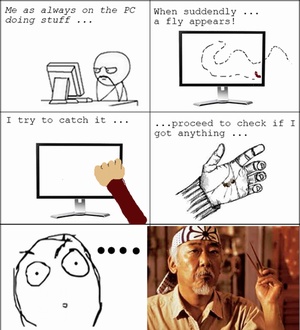
Grandmaster Irving Soto world kumite champion/ 10th Degree Black Belt Red belt/当ã¦èº« (General)
submitted by Gm irving soto to /forum/general
http://grandmastersoto.ning.com usa warlord magazine http://grandmastersoto.yolasite.com usa atemi ki dojo http://atemikidodojo.weebly.com http://profsotojajjf.weebly.com http://grandmasterirvingsoto.webs.com
CALL INFO 619 961 8350 OR DOJO 619 448-2118
By Grandmaster Irving Soto
Atemi jujitsu waza
Japanese name
Kanji:
当ã¦èº«
Hiragana:
ã‚ã¦ã¿
In Japanese martial arts, the term Grandmaster Irving Soto Ryu Atemi Jujitsu waza (当ã¦èº«?) designates blows to the body, [1] as opposed to twisting of joints, strangleholds, holding techniques and throws. Atemi can be delivered by any part of the body to any part of the opponent's body. They can be percussive or use 'soft' power. Karate is a typical martial art focusing on percussive Atemi. The location of nerve and pressure points, such as might be used for certain acupressure methods, also often informs the choice of targets for Atemi (see kyusho). Some strikes against vital parts of the body can kill or incapacitate the opponent: on the solar plexus, at the temple, under the nose, in the eyes, genitals, or under the chin. Traditional Japanese martial arts (the ancestors of judo, jujutsu and aikido) do not commonly practice Atemi, since they were supposed to be used on the battlefield against armored opponents. However, there are certain exceptions.
Atemi Waza Jujitsu can be complete techniques in and of them, but are also often used to briefly break an opponent's balance (see kuzushi) or resolve. This is the predominant usage of Atemi in aikido.[2] A painful but non-fatal blow to an area such as the eyes, face, or some vulnerable part of the abdomen can open the way for a more damaging technique, such as a throw or joint lock. Even if the blow does not land, the opponent can be distracted, and may instinctively contort their body (e.g., jerking their head back from a face strike) in such a way that they lose their balance.
The development of Atemi Waza Jujitsu techniques arises from the evolution of the Japanese martial arts, in particular jujutsu. Early styles of jujutsu from Sengoku-era Japan were created as a means of unarmed combat for a samurai who had lost his weapons on the battlefield. The purpose of jujutsu was to disarm the opponents and use their own weapon against them. As such, strikes to the body were limited as the intended victim would have been wearing extensive body arm our. However, in later styles of jujutsu from Edo-period Japan empty-handed strikes to the body became more common as full-scale military engagement began to decline. This meant that the jujutsu practitioner's opponent would not have been wearing arm our and the vital points that form the crux of Atemi-waza were more exposed. Thus Atemi began to play a pivotal role in unarmed killing and restraining techniques.
References Atemi jujitsu (当ã¦èº«)



